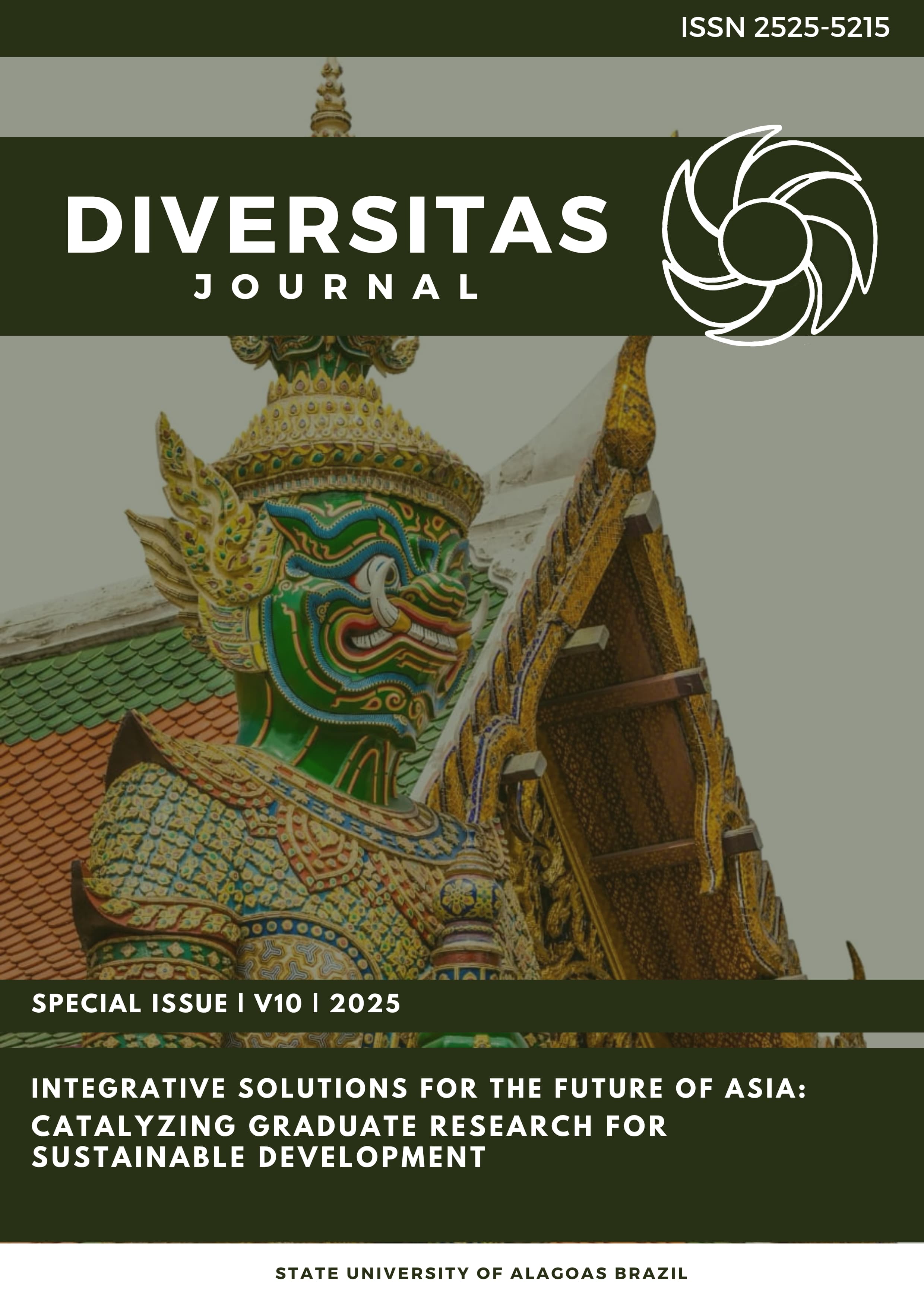Perceived Impact of Product Innovation on Brand Loyalty: A Study of Smartphone Consumers in China
DOI:
https://doi.org/10.48017/dj.v10ispecial_1.3151Palabras clave:
produc innovation, brand loyalty, smartphone, product featuresResumen
With heightened competition within the smartphone industry, especially in China, coupled with increasing consumer expectations, understanding the factors influencing brand loyalty is crucial for both academia and industry. This study investigates the nuanced relationship between product innovation and brand loyalty within the dynamic context of smartphone products. The study adopts a quantitative approach, incorporating a survey among 385 smartphone users from China. The findings revealed that the features influencing smartphone preferences among respondents include wireless charging features, superior camera capabilities, and performance to name a few. In addition, respondents express favorable views on product innovation dimensions that include appearance and design; quality and durability; functional innovation; and features of the smartphones they own at the time of the study. In terms of the association between brand loyalty and socio-demographic characteristics, results showed that gender, age groups, education level, income level, and employment status emerged as factors in shaping brand loyalty within the smartphone market among Chinese owners. However, contrary to expectations, the study found no significant relationship between perceived product innovation dimensions (Appearance and Design, Quality and Durability, Functions, and Features) and brand loyalty. To thrive in the ever-evolving landscape of the smartphone industry, Chinese businesses must adopt strategic approaches that will promote brand loyalty among their target market. Even though product innovation does not directly lead to brand loyalty, the business should continue innovating to ensure that customers will purchase their products, and then elevate other possible factors that will lead to brand loyalty.Métricas
Citas
Alam, A., Usman Arshad, M., & Adnan Shabbir, S. (2012). Brand credibility, customer loyalty and the role of religious orientation. Asia Pacific Journal of Marketing and Logistics, 24(4), 583–598. https://doi.org/10.1108/13555851211259034
Aydin, S., Özer, G., & Arasil, Ö. (2005). Customer loyalty and the effect of switching costs as a moderator variable. Marketing Intelligence & Planning, 23(1), 89–103. https://doi.org/10.1108/02634500510577492
Breitinger, F., Tully-Doyle, R., & Hassenfeldt, C. (2020). A survey on smartphone user’s security choices, awareness and Education. Computers & Security, 88, 101647. https://doi.org/10.1016/j.cose.2019.101647
Cecere, G., Corrocher, N., & Battaglia, R. D. (2015). Innovation and competition in the smartphone industry: Is there a dominant design? Telecommunications Policy, 39(3–4), 162–175. https://doi.org/10.1016/j.telpol.2014.07.002
Chitturi, R., Raghunathan, R., & Mahajan, V. (2008). Delight by Design: The Role of Hedonic versus Utilitarian Benefits. Journal of Marketing, 72(3), 48-63. https://doi.org/10.1509/JMKG.72.3.048
Counterpoint, (2023). China smartphone market share: Quarterly. https://www.counterpointresearch.com/insights/china-smartphone-share/#
Crolic, C., Zheng, Y., Hoegg, J., & Alba, J. W. (2019). The influence of product aesthetics on consumer inference making. Journal of the Association for Consumer Research, 4(4), 398–408. https://doi.org/10.1086/705033
Hanaysha, J., & Hilman, H. (2015). Product innovation as a key success factor to build Sustainable Brand Equity. Management Science Letters, 5(6), 567–576. https://doi.org/10.5267/j.msl.2015.4.009
Hanif, M. H., Fahmi, M. I., Wai, C. L., Aihsan, M. Z., Aminudin, A., Zhe, L. W., & Zakariya, M. (2020). Maximum efficiency scheme using superimposed and Taguchi method wireless charging for mobile phone. Journal of Physics: Conference Series, 1432(1), 012015. https://doi.org/10.1088/1742-6596/1432/1/012015
Kotler, P. & Armstrong G. (2004). Principles of Marketing, 10th ed., Upper Saddle River, NJ: Prentice Hall.
Kotler, P. (2017). Customer Value Management. Journal of Creating Value, 3(2), 170-172. https://doi.org/10.1177/2394964317706879
Kumar, S., & Menon, R.P. (2017). Brand loyalty of customers in smartphone brands. Indian Journal of Marketing, 47 (3), 8-15. doi:10.17010/ijom/2017/v47/i3/111417
Lee, P., Pennington, J., & Stanton, B. (2022). Cash in the cupboard: UK consumers hoard a billion pounds worth of old smartphones. Deloitte. https://www2.deloitte.com/content/dam/Deloitte/global/Documents/About-Deloitte/about-deloitte-global-report-full-version-2020.pdf
Lee, S.-H., & Workman, J. E. (2020). Trendsetting and gender matter: Brand loyalty, perceived quality, and word-of-mouth. Journal of Global Fashion Marketing, 12(1), 16–31. https://doi.org/10.1080/20932685.2020.1835523
Leung, L. (2020). Exploring the relationship between smartphone activities, flow experience, and boredom in free time. Computers in Human Behavior, 103, 130–139. https://doi.org/10.1016/j.chb.2019.09.030
Nandi, S., & Pattanayak, J. K. (2015). Brand loyalty and switching: An empirical study on mobile phone usage among young Indian adults. Indian Journal of Marketing, 45(3), 39. https://doi.org/10.17010/ijom/2015/v45/i3/79966
Nawaz, S., Jiang, Y., Alam, F., & Nawaz, M. Z. (2020). Role of brand love and consumers’ demographics in building consumer–brand relationship. SAGE Open, 10(4), 215824402098300. https://doi.org/10.1177/2158244020983005
Panigrahi, S. K., Azizan, N. A., & Al Shamsi, I. R. (2021). Product innovation, customer satisfaction, and brand loyalty of using smartphones among University Students : PLS – SEM approach. Indian Journal of Marketing, 51(1), 8. https://doi.org/10.17010/ijom/2021/v51/i1/156931
Rangaswamy, N., & Arora, P. (2016). The mobile internet in the wild and every day: Digital Leisure in the slums of Urban India. International Journal of Cultural Studies, 19(6), 611–626. https://doi.org/10.1177/1367877915576538
Rizwan, A, Ahmad, M., & Haq, M. (2014). Effect of brand trust and customer satisfaction on brand loyalty in Bahawalpur. Journal of sociological research, 5(1), 306-326. http://dx.doi.org/10.5296/ jsr.v5i1.6568.
Rothaermel, F. (2016). Technological Innovation: Generating Economic Results (2nd Edition), 233-256. https://doi.org/10.1108/S1048-473620160000026008
Sabin, S. (2023, June 14). Smartphone owners prefer simple features like battery life, durability, camera quality. Morning Consult Pro. https://pro.morningconsult.com/instant-intel/smartphone-owners-prefer-simple-features-like-battery-life-durability-camera-quality
Sharma, S. (2020, July 6). China is the new hub for Wireless Charging Technology. IPWatchdog.com | Patents & Intellectual Property Law. https://ipwatchdog.com/2020/07/06/china-new-hub-wireless-charging-technology/id=123032/
Silk, M., Millington, B., Rich, E., & Bush, A. (2016). (re-)thinking digital leisure. Leisure Studies, 35(6), 712–723. https://doi.org/10.1080/02614367.2016.1240223
Slotta, D. (2023, September 29). China: Smartphone penetration rate 2027. Statista. https://www.statista.com/statistics/321482/smartphone-user-penetration-in-china/#:~:text=As%20of%202022%2C%20the%20penetration,in%202022%20exceeded%20one%20billion
Srivastava, M. (2016). A study of determinants of brand loyalty in cosmetics for women consumers of Pune City using path analysis via regression. Indian Journal of Marketing, 46(6), 33. https://doi.org/10.17010/ijom/2016/v46/i6/94845
Sweeney, J., & Swait, J. (2008). The effects of brand credibility on customer loyalty. Journal of retailing and consumer services, 15(3), 179-193. https://doi.org/10.1016/j.jretconser.2007.04.001
Tecno. (2023, September 19). Smartphone innovation in the Third Decade of the 21st Century. MIT Technology Review. https://www.technologyreview.com/2020/03/05/905500/smartphone-innovation-in-the-third-decade-of-the-21st-century/
Torres, P. M., Augusto, M. G., & Lisboa, J. V. (2015). Determining the causal relationships that affect consumer-based brand equity. Marketing Intelligence & Planning, 33(6), 944–956. https://doi.org/10.1108/mip-11-2014-0211
Vikaliana, R., Panjaitan, R., Adam, E., Fasa, M. I., & Roslan, A. H. (2021). Brand loyalty in the smartphone user’s: The role of brand credibility and consumer convenience. Studies of Applied Economics, 39(4). https://doi.org/10.25115/eea.v39i4.4477
Wang, B., Gao, Y., Su, Z., & Li, J. (2017). The structural equation analysis of perceived product innovativeness upon brand loyalty based on the computation of reliability and validity analysis. Cluster Computing, 22(S4), 10207–10217. https://doi.org/10.1007/s10586-017-1218-4
Wen, N., & Lurie, N. H. (2019). More than aesthetic: Visual boundaries and perceived variety. Journal of Retailing, 95(3), 86–98. https://doi.org/10.1016/j.jretai.2019.03.001
Winarti, Y., Sarkum, S., & Halim, Abd. (2021). Product innovation on customer satisfaction and brand loyalty of smartphone users. JOURNAL OF APPLIED BUSINESS ADMINISTRATION, 5(2), 179–187. https://doi.org/10.30871/jaba.v5i2.3166
Yildiz, E., & Kocan, M. (2018). Impact of Product Innovation and Product Quality on Brand Loyalty: An Empirical Study on Smartphone Users. ICPESS 2018 PROCEEDINGS Volume 2: Ecomonic Studies, 51.
Yusuf, A. (2021). The influence of product innovation and brand image on customer purchase decision on oppo smartphone products in South Tangerang City. Budapest International Research and Critics Institute (BIRCI-Journal): Humanities and Social Sciences, 4(1), 472–481. https://doi.org/10.33258/birci.v4i1.1629
Voss, K. E., Spangenberg, E. R., & Grohmann, B. (2003). Measuring the Hedonic and Utilitarian Dimensions of Consumer Attitude. Journal of Marketing Research, 40(3), 310-320. https://doi.org/10.1509/jmkr.40.3.310.19238
Zhang, M., Li L., Ye, Y., Qin, K., & Zhong J.(2020). The effect of brand anthropomorphism, brand distinctiveness, and warmth on brand attitude: A mediated moderation model. Journal of Consumer Behaviour, 19(5), 523-536. https://doi.org/10.1002/cb.1835
Descargas
Publicado
Cómo citar
Número
Sección
Licencia
Derechos de autor 2025 Liu Guoha, Rovena Dellova

Esta obra está bajo una licencia internacional Creative Commons Atribución 4.0.
O periodico Diversitas Journal expressa que os artigos são de unica responsabilidade dos Autores, conhecedores da legislação Brasileira e internacional. Os artigos são revisados pelos pares e devem ter o cuidado de avisar da possível incidencia de plagiarismo. Contudo o plagio é uma ação incontestavel dos autores. A Diversitas Journal não publicará artigos com indicios de Plagiarismos. Artigos com plagios serão tratados em conformidade com os procedimentos de plagiarismo COPE.
A violação dos direitos autorais constitui crime, previsto no artigo 184, do Código Penal Brasileiro:
“Art. 184 Violar direitos de autor e os que lhe são conexos: Pena – detenção, de 3 (três) meses a 1 (um) ano, ou multa. § 1o Se a violação consistir em reprodução total ou parcial, com intuito de lucro direto ou indireto, por qualquer meio ou processo, de obra intelectual, interpretação, execução ou fonograma, sem autorização expressa do autor, do artista intérprete ou executante, do produtor, conforme o caso, ou de quem os represente: Pena – reclusão, de 2 (dois) a 4 (quatro) anos, e multa.”


















